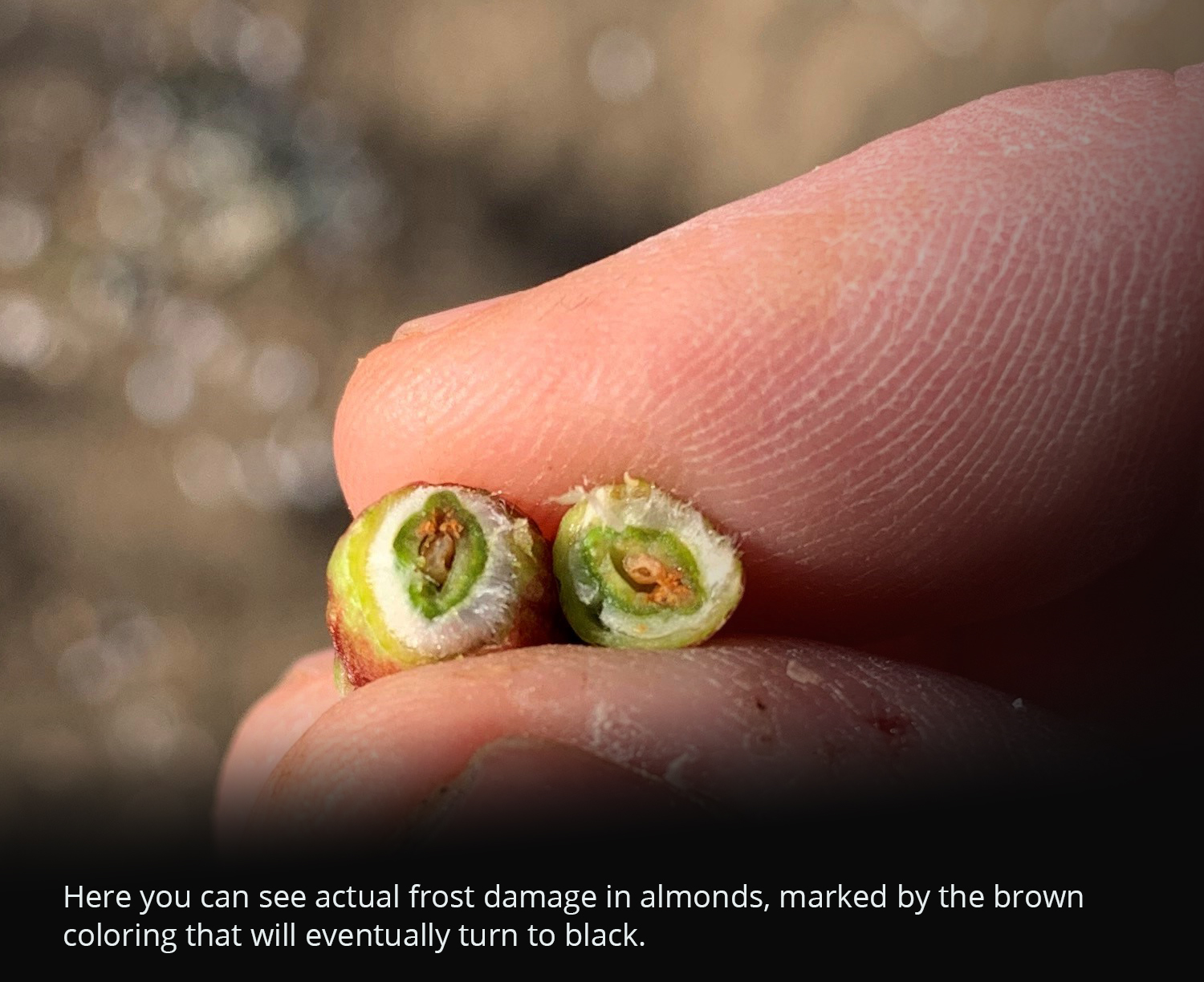Our Agronomy Team Breaks Down Recent Frost Damage in Almonds, and What it Means for 2022 Production
We’ve seen varying degrees of frost damage throughout the Valley, and growers are concerned about what this means for 2022 production.
The good news, in many of the customer orchards our agronomist team has walked over the past week, is that the damage hasn’t been a doomsday scenario in the Southern Valley.
In many cases, freezing temperatures weren’t sustained for an extended period of time at full bloom, so the damage to the trees was short lived in the best cases.
That said, we know every block is different, and every region has its own challenges, not to mention the many differences in variety, orchard conditions, bloom stage and orchard conditions and how frost can affect those situations differently. While some growers have escaped disaster, others have been decimated by frost, hail and other stressors this year.
Unfortunately, we’ve been in this precarious position before, in previous years where we saw a number of days below freezing, and while there were some losses on the front end when frost hit during full bloom, we’ve seen otherwise healthy trees recover well from these frosty conditions – for example, not dropping as many nuts throughout the growing season to make up the difference from early-season losses and still churn out a decent yield in the fall.
In talking with Holloway Director of Agronomy, Steve Lenander, we’re hoping for incremental damage in the South Valley again in 2022:
“We’ve seen this before, when temperatures were in the teens, and we had 15-20% loss, but we went on to have good yields,” Lenander said. “What happened there was it happened in a healthy orchard, and healthy trees can self-regulate themselves. When the June drop happens, we just didn’t have as much drop that season. The trees kept the fewer nuts they had, and they still produced great yields at the end of the season. But you have to have healthy trees.”
Here at Holloway, we believe happy soils make for happy trees. Using naturally occurring and faster-acting soil amendments such as dihydrate gypsum, and compost, along with a proper soil management practices early in an orchard’s lifespan, goes a long way in terms of helping permanent crops fight off stressors season after season.
Of late, the concern is hail and frost. Later in the season it will be water quality and availability issues, nutrient deficiencies, high heat, pests and disease. But optimize soil and tree health, and those stress events have less of an impact as the season wears on.
The attached images show some of the frost damage we witnessed toward the tail end of February. If you’d like a second opinion on your orchard, are looking for early-season soil or water sampling and analysis from our agronomy team, contact us today and get a consultation on the books.
With bloom wrapping up, the trees are starting to pull, and it’s critical to ensure nutrients and water are available during this critical time of growth and development.
- Learn more about our soils-first products at: hollowayag.com/soil-amendments
- Learn more about our agronomy services at: hollowayag.com/agronomy
Join Over 800 Companies Using Holloway Today.
Or Become Part of The Holloway Group to Further Your Career.


